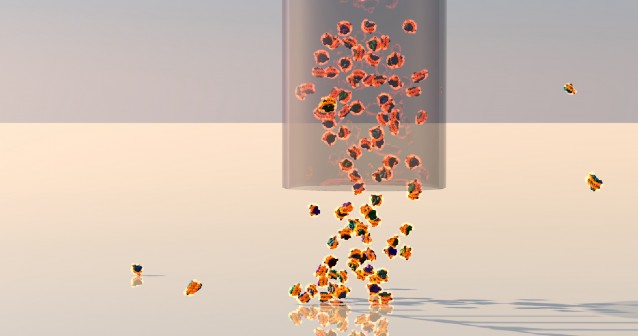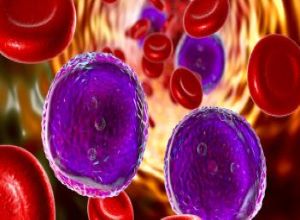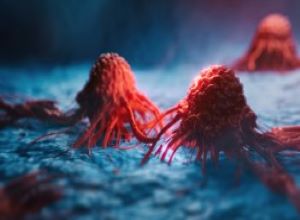|
May 2021 NEW METHOD TO ANALYZE NUCLEOSOMESFeaturing: Neil Kelleher, PhD
Northwestern Medicine scientists have developed a new method to analyze the protein composition of intact nucleosomes without losing combinatorial information present in chromatin. The technique, called Nuc-MS, could help scientists more efficiently uncover the mechanisms behind mutation-driven diseases such as some cancers, according to Neil Kelleher, PhD, professor of Medicine in the Division of Hematology and Oncology, director of the Proteomics Center of Excellence and senior author of the study published in Nature Methods. Neil Kelleher, PhD, professor of Medicine in the Division of Hematology and Oncology and director of the Proteomics Center of Excellence, was senior author of the study published in Nature Methods. “Other techniques shred nucleosomes and their histone proteins into little pieces and you only get the minority of the pieces back,” said Kelleher, who is also a professor of Biochemistry and Molecular Genetics and a professor at the Weinberg College of Arts and Sciences. “If we can keep the whole nucleosome intact, we can preserve the co-occurrence of all these little switches that we’re trying to figure out in chromatin biology and cancer epigenetics.” Chromatin is a complex comprised primarily of DNA and protein found in cells. Its primary function is packaging our DNA into compact structures. Chromatin is comprised of a structured fiber of nucleosome particles and histone proteins, similar to how suspension bridge cable is constructed from smaller strands of wire. Histones are modified by post-translational modifications, part of the system of epigenetic regulation that ensures the correct genes are expressed at the right time. Previous studies have indicated that the precise arrangement of histone marks on nucleosomes are also necessary for epigenetic regulation. These two systems are deeply intertwined, but current analysis techniques for histones are highly destructive, breaking down the histone and nucleosomes into tiny pieces and forcing scientists to infer their composition and their impacts on gene expression. “There’s already enough inferences in biology; let’s remove a few of them through more direct measurements,” Kelleher said. Instead, Kelleher and his collaborators developed Nuc-MS. The technique uses a “top down” approach to controllably disassemble the nucleosomes using high performance mass spectrometry, measuring the masses and characterizing the histones and their modifications. “These nucleosomes are about 100 times heavier, compared to little things like a peptide,” Kelleher said. Nuc-MS displays the entire landscape of histone variants and their post-translational modifications in a single mass spectrum, offering a new readout of nucleosome-level biology. Many cancers are driven by mutations in histone biology that help maintain chromatin, so this method could help scientists figure out exactly what is damaged downstream of those mutations. “This preserves the biological information that can help clarify the picture of how alterations in histone code can lead to cancer,” Kelleher said. The technique was a collaboration between scientists at the Chemistry of Life Processes Institute — of which Kelleher is the director — the Northwestern Proteomics Center of Excellence and the Department of Biochemistry and Molecular Genetics. Co-authors of the publication include Ali Shilatifard, PhD, the Robert Francis Furchgott Professor, chair of Biochemistry and Molecular Genetics, a professor of Pediatrics and director of the Simpson Querrey Institute for Epigenetics; Marc Morgan, DPhil, research assistant professor of Biochemistry and Molecular Genetics; Andrea Piunti, PhD, a postdoctoral fellow in the Shilatifard laboratory; and Marta Iwanaszko, PhD, research assistant professor of Biochemistry and Molecular Genetics. Kelleher and Shilatifard are members of the Robert H. Lurie Comprehensive Cancer Center of Northwestern University. This work was supported by the National Institute of General Medical Sciences grant P41 GM108569 for the National Resource for Translational and Developmental Proteomics at Northwestern University and National Institutes of Health grants S10OD025194, RF1AG063903, R44GM116584, R44CA212733 and R44CA214076. This article was originally published in the Feinberg School of Medicine News Center on May 21, 2021. |
Neil Kelleher, PhD, professor of Medicine in the Division of Hematology and Oncology and director of the Proteomics Center of Excellence, was senior author of the study published in Nature Methods.
Refer a PatientNorthwestern Medicine welcomes the opportunity to partner with you in caring for your patients.
|
You May Also Like
|
December 2020 |
December 2020 |






